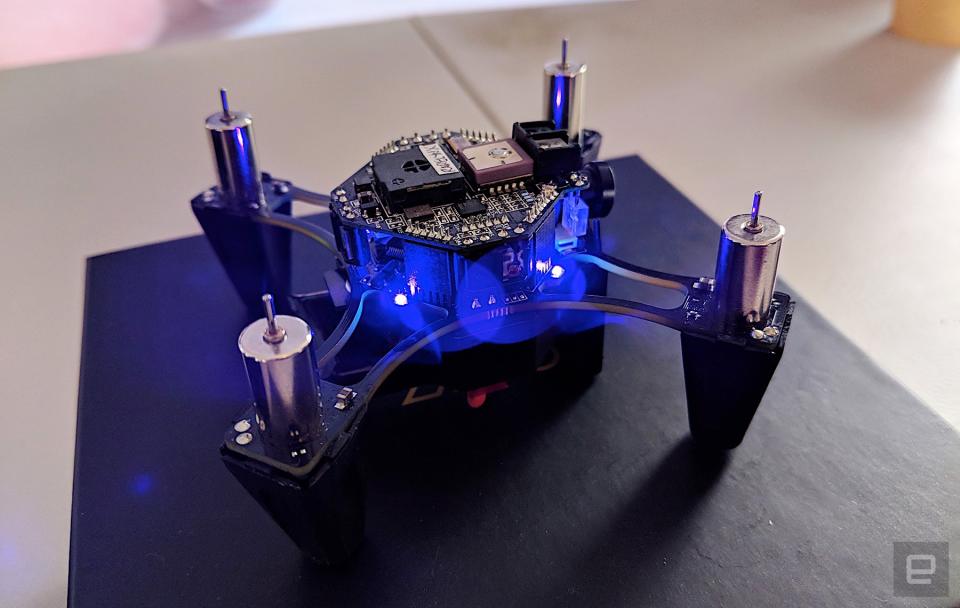Zano drone returns after multi-million dollar crowdfunding failure
The project raised over $3 million in crowdfunding, but failed to deliver.
You might not know many micro-drones by name, but there's a chance you know Zano. Unfortunately, that's because it was one of the more controversial Kickstarter failures of recent times. Zano raised over $3 million in late 2014, before being shown at CES 2015. The promise was simple, a palm-sized drone with the self-flying and photography smarts of something much bigger (and much more expensive).
The problem is, just 12 months later, the product was already delayed, the company had spent all its funding and the creditors moved in to liquidate the assets, leaving thousands of backers high and dry. What's worse, is that those lucky few that did receive their Zano were left with a fancy paperweight. The drone was designed to connect back to a server each time you switched it on for updates. Sadly that computer was no longer there, grounding the Zano forever. But there's a flicker of hope.
At this year's Drone Rodeo (a satellite event at CES), a small table had something familiar on it: a Zano. Behind the table, a banner exclaiming "Will it fly again?" Behind that table was Vernon Kerswell, a prominent character in the nano-drone world, who already has an established brand of quadcopters called, simply, Micro Drone (his company is Extreme Fliers). He explained to me that they purchased Zano's assets and IP during the liquidation and wanted to revive it.
The question, then, is why would anyone, let alone someone already involved with a successful product want to associate themselves with the poisoned name of Zano. Kerswell, it turns out, just loved the promise that Zano offered and wants to try an make it a reality, even after all this time. "I think that it's a positive if Extreme Fliers engineers can make Zano work, then that's a good thing for us." He told Engadget.

Kerswell's enthusiasm is infectious, but he's not naive. Beside the drones on the table was a stack of fliers that explain how Zano "spectacularly failed." And that his group of passionate tinkerers has been writing code for Zano for the last 12 months. The flier then explains the team's intention to make it open source, calling the project the "Raspberry Pi for drones."
I asked Kerswell if he intended to productize Zano, to which his response was a little more pragmatic. He told me that it's a challenge for their team, and the big question is can they get it working. On a slightly more optimistic note, he suggested that through his other endeavors with Micro Drone and Extreme Fliers, it is possible that they could manufacture a small run, maybe 1,000 which he would first offer to backers of the original at a discounted rate. He's not sure if that will happen yet, but that's not the only way to revive things.
If all goes according to plan, Kerswell told me that they could have a software release in the next six months that would revive all the Zanos that were grounded due to the server they relied upon for updates being switched off. This, at least, would revive the handful of drones that managed to crawl off the production line. Kerswell has no connection to the original company, nor the debts it accrued, but hopes he can still help supporters get more life out of their Zano (or, at least restore some faith in its potential).
Ultimately, Kerswell would like to see Zano grow into the drone that it always intended to be. He sees it as something that would appeal to the hacking/coding community to develop and test innovative new features for. Something experimental and modifiable, rather than the out-of-the-box smart-selfie drone it nearly became. The big question is whether Kerswell can answer his own question: Will Zano fly again?
Click here to catch up on the latest news from CES 2018.




